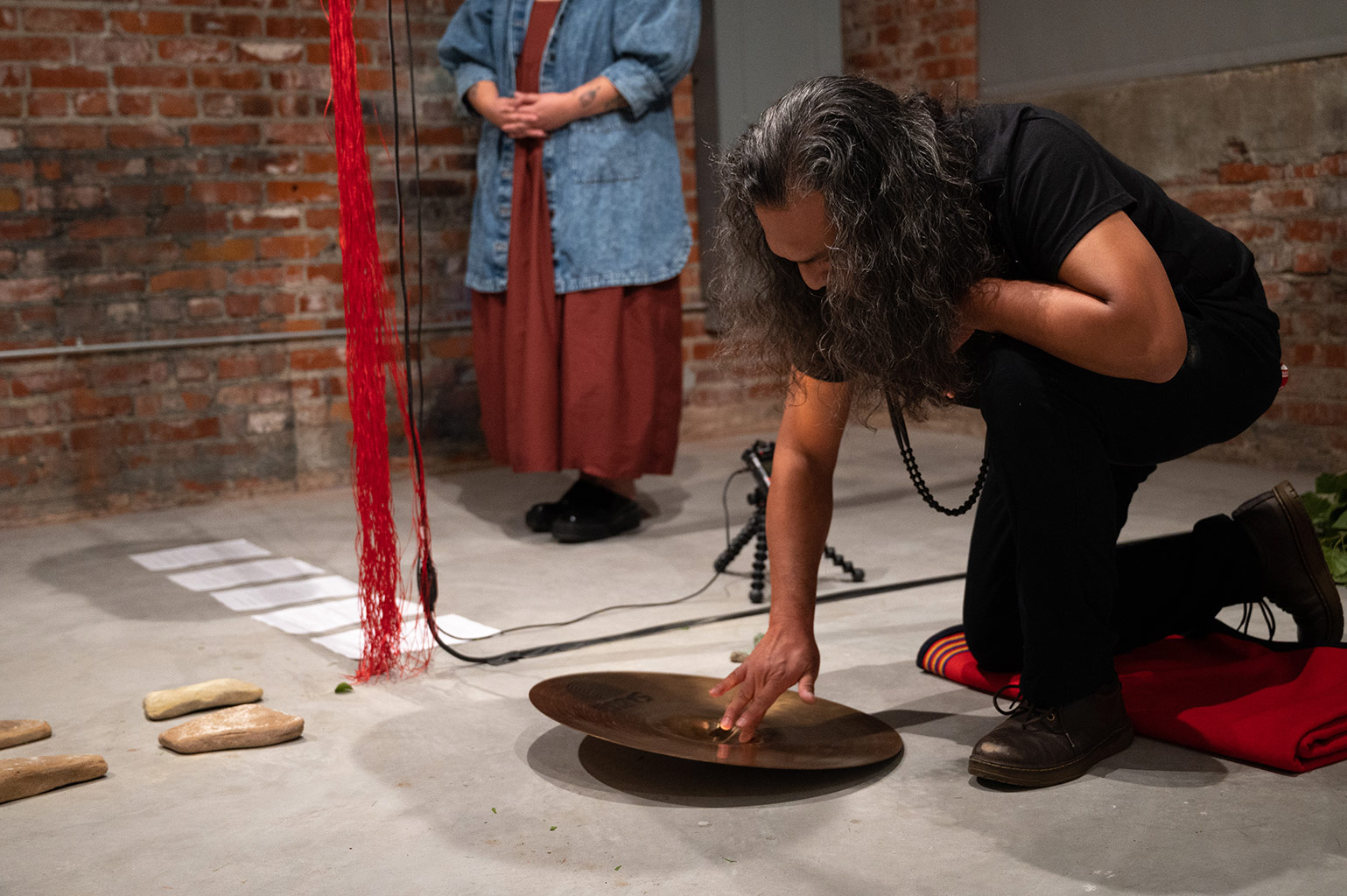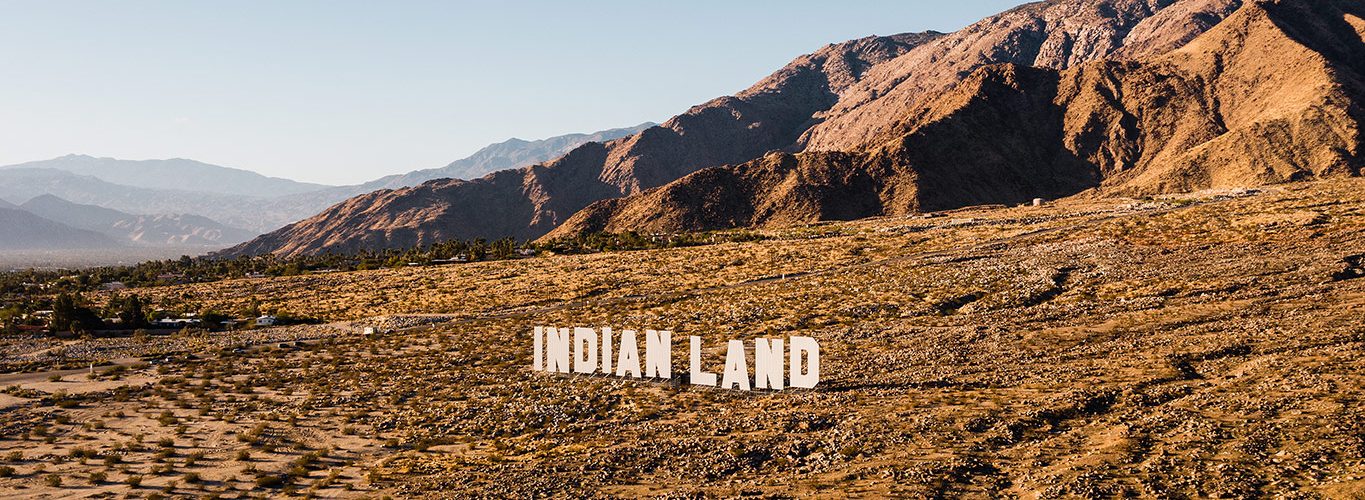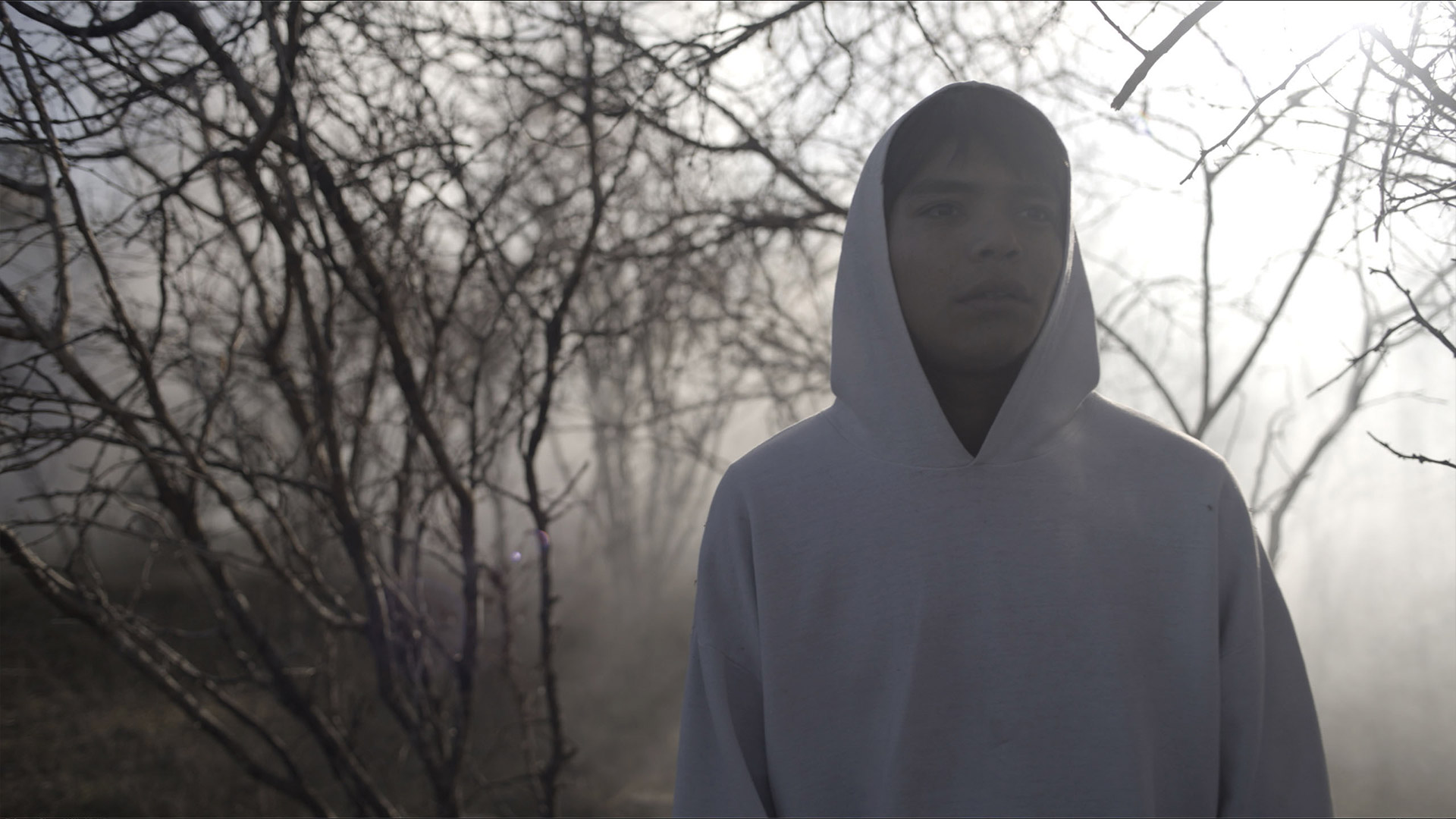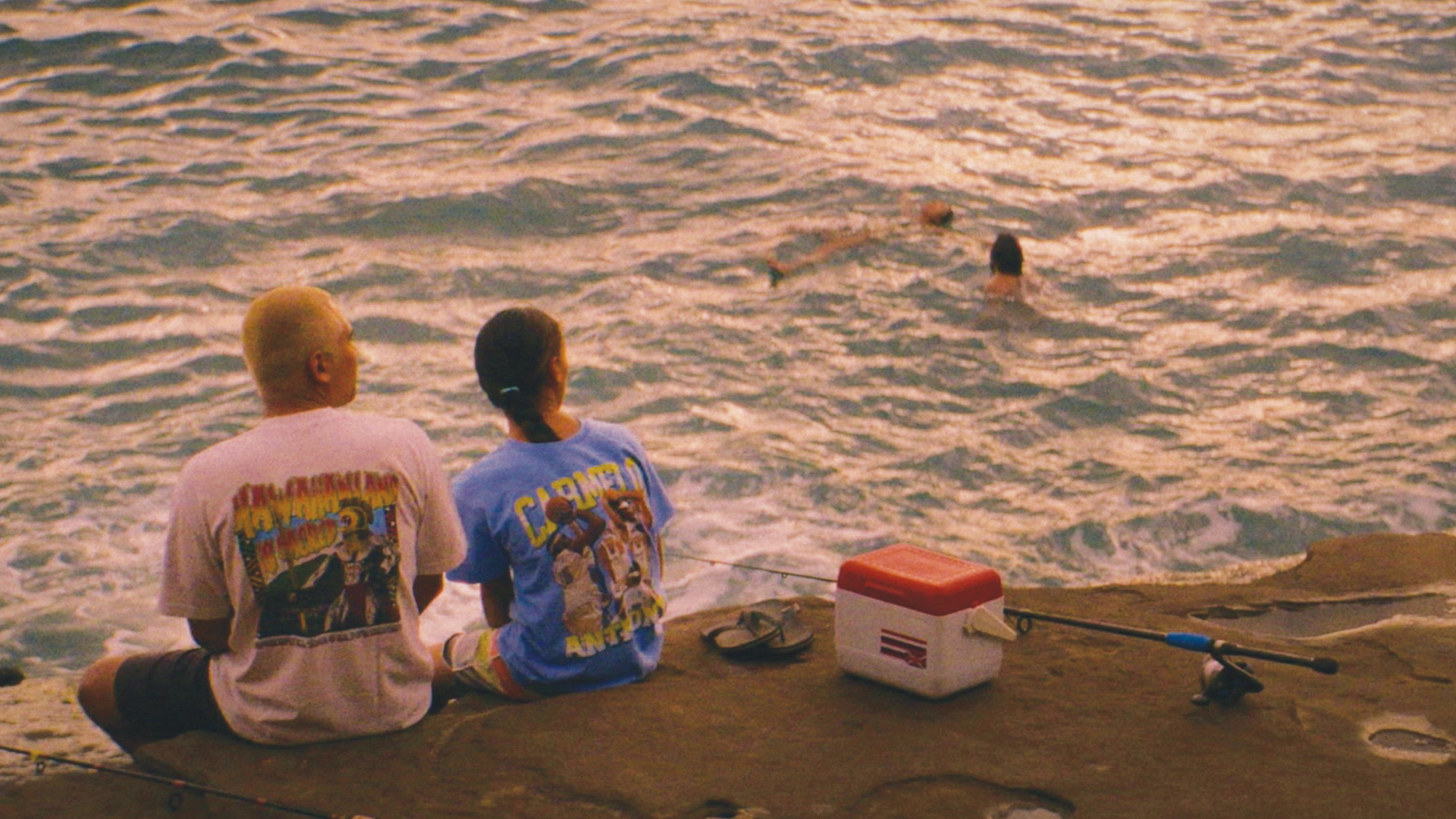Incorporating Tradition in Contemporary Music
Just as Indigenous musicians resist reductive definitions of Indigeneity, they also defy stereotypes of “Indigenous music,” which can often pigeonhole it as music with flutes, drums, and traditional singers, or music made for pow-wows. Instead, contemporary Indigenous musicians incorporate traditional elements into their work by contemplating a constellation of considerations. These may include specific instruments and songs, certainly, but also Indigenous worldviews, protocols, lineage, language, and other relevant themes, with knowledge often handed down by elders.
Sihasin is a brother-sister duo consisting of Diné (Navajo) siblings Jeneda and Clayson Benally, who were raised on Diné Nation, “in Black Mesa, Arizona, near Big Mountain.” They were raised in a musical household, with an Ashkenazi Jewish mother who was active in the Greenwich music scene, and a Diné father who is a hatałii, which translates to “singer.” In Diné culture, a singer is also a medicine man; their father managed to avoid the boarding school system until his late 20s and was thus able to maintain and pass down many of their traditional teachings and lifeways.
“For us, the music and song … was kind of a natural synthesis of our traditional history or ceremonies. A lot of that is told in song form, and it’s carrying history,” explains Clayson Benally.
The Benallys’ access to such knowledge was part of their reason for starting their previous project, Blackfire — a “justifiably angry punk band” that was active from 1989 to 2003 — and it continues into their current project, Sihasin. Growing up on a remote area of their reservation, the siblings were lucky if they occasionally got one radio station: KTNN, or “The Voice of the Navajo Nation.” Instead, while on road trips with their father, they relied on singing pow-wow songs or traditional Navajo songs, sometimes going long distances — even cross-country — without repeating a song. Some of these are now incorporated into Sihasin’s music, though the Benallys are careful to note that they never include ceremonial songs.
Influential Southwest composer, interdisciplinary artist, and experimental musician Raven Chacon, who is Diné (Navajo) and Chicano, also has a foundational relationship with traditional Navajo songs.
“Music that’s either social or used ceremonially has had an influence on me, mostly because my grandfather [was] a singer,” says Chacon. “As a child, he was the person that was doing it. Seeing live music, it was only him. Anybody playing an instrument, it was him and his voice. I don’t think I saw anybody actually in person — not on television, but in the flesh — make music, other than him and other singers in Chinle, [Arizona,] on the reservation.”
Chacon now splits his time between Albuquerque, New Mexico, and Hudson Valley, New York. Though he comes from humble DIY roots and runs his own experimental record label, Sicksicksick, Chacon has gained widespread recognition for his interdisciplinary work. In 2022, he was the first Native American to win the Pulitzer Prize for Music for his classical composition Voiceless Mass; he is also well-known for his stint with the Indigenous collective Postcommodity, from 2009 to 2018.
At times, Chacon actively seeks to make objects untethered from tradition, such as invented instruments. One such example is a snare drum with a guitar pickup mounted on its underside, which is then fed into an amplifier. The result is a drum which resonates when played, and then essentially continues to play itself through a feedback loop.
“That’s not to avoid a tradition [completely] — because I think there’s still probably other other traditions inside of that,” says Chacon, who goes on to add that invented instruments may still contain values, sonorities, and practices of performance that may have been influenced by other aspects of his life. “But I think the idea of making an instrument was to break away from any tradition.”

In related musical circles, Warren Realrider of TickSuck makes sound art and noise that reference tradition in conceptual ways. His sampled recordings, for instance, may include plant material Native people used pre-contact or a metal ladle that “references modern adaptation of non-Native manufactured items.” He is also inspired by the “raw sounds” from where he lives in Oklahoma, such as “metal from former family homes for harsh noise development” or “samples of pow-wow concession stands to recontextualize into new compositions.”
In much of Realrider’s work, he tries to “sonically dig into the personal, cultural, or political history of this place” and “ties to place in all its complexities.” Along the way, he explains, “the sounds, creations, and collaborations are always flitting into the universe through the tradish and contemporary spheres.”
New York City-based interdisciplinary artist Chloe Alexandra Thompson, who is Nêhiyaw (Cree) and grew up in Vancouver, British Columbia, celebrates tradition by recognizing the ways information is handed down to her.
“A lot of how I’ve learned how to do any of this is through observation, which is a part of how my people teach and learn,” she explains. “Not so directly being told how to do things [like] in school, but moreso: let me show you this, now-you-do-it style, and I’ve been really lucky to have some amazing mentorship in that capacity.”
Over the years, Thompson has been able to return to her tribal nation and speak to family members or other Indigenous artists about protocols and how these apply to specific art contexts. She is quick to say her creative works are not “traditional” or “ceremonial,” but that they hold to some similar principles. She strives for reciprocity and mutual exchange with her audiences, as well as the land and spaces in which she is performing. She also considers how modern technologies contain stones and minerals that have been harvested without the materials’ consent, citing Suzanne Kite’s thoughts on such topics as influential.
“Making weird noises, sound art, and experimental music is not a ceremony — but it is its own form of expression,” she explains. “I’m more interested in how traditional relations with sound can influence that, and there can still be some sort of mystery in it.”
Definitions of “tradition” can also evoke non-Indigenous histories. Renata Yazzie, a Diné (Navajo) musicologist, pianist, and writer, stresses that her music has never “sounded Native,” because composers like Bach and Chopin weren’t Native.
“Classical music is an artform heavily steeped in ‘tradition,'” Yazzie shares. “There is a canon of works, mostly by 100-plus-year-old Western European male composers. There is a way to dress, to act, to speak, to look, to compose — right down to the attitude and philosophy you should hold about music. It is a very unforgiving and unrelenting space to be in, if you should hold even slightly different ideas about any of it.”
Through the years, Yazzie has learned how to navigate such systems, but has never been interested in conforming to them.
“I am a bit of a disruptor simply by the fact that I am a Native woman who plays classical music,” she continues. “I don’t think that what I do is necessarily innovative. Navajo people have been adapting and re-adapting to new circumstances, inputting some new ideas and making it Navajo. That, in itself, is our tradition.”
- Introduction
- Defining “Indigeneity” on One’s Own Terms
- Incorporating Tradition in Contemporary Music
- Learning, Preserving & Revitalizing Language
- Focusing on the Land & the Environment
- Raising Awareness Around MMIW/P
- Using Film as a Medium to Elevate the Collective
- Uplifting & Empowering the Youth
- Facing the Challenges of Visibility
- Building Infrastructure for Change
- Dreaming the Future







[…] min read29 seconds agoAdd comment I haven’t even stepped foot into the Snotty Nose Rez Kids show, and I already notice a couple things outside the venue. Clearly, the Indigenous fashion is […]